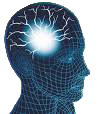I thought I would reproduce the following research findings (published in Medscape Medical News.) as it is relevant to both my osteopathic practice when examining patients with limb pain, which is frequently (but as the following article shows, not always), caused by trapped nerves in the neck & also to my work as a specialist in Migraine.
From a joint British-Chilean study;
Although limb pain is not included as a manifestation of migraine in international headache classifications, children and adults may experience recurrent limb pain as part of the migraine spectrum, a new study suggests. The four-generation study reveals a familial form of limb pain and migraine.
Researchers performed a prospective clinical and pedigree analysis involving a 27-member family followed for 8 years. They defined migraine limb pain as intermittent arm or leg pain during a migraine episode, cluster headache, or cluster migraine with no other explanation but that may also occur in the absence of headache. The pedigree analysis showed an autosomal dominant inheritance pattern manifesting mainly as limb pain in children and as migraine in adults.
“It’s common in adults. It’s as common as hemiplegic migraine, and in children, one third of children will have some periodic syndrome like limb pain associated with their migraines,” Heather Angus-Leppan, MD, MSc, consultant neurologist at the Royal Free Hospital and senior lecturer at University College London, United Kingdom, and immediate past president of clinical neurosciences at the Royal Society of Medicine, told Medscape Medical News.
Eight of the 27 members of this family had benign recurrent limb and/or body pain. Pain began as early as age 8 years and as late as age 30, and it recurred over 5 to 52 years. Sites of pain were the arm, hand, shoulder, chest, and neck. Limb pain was unilateral but could vary sides from episode to episode. Headache (7 of 8 members with some form of aura) occurred before, during, or after limb pain, and limb pain in adults could occur without headache.
The spectrum of manifestations of the condition may change over the lifetime. Children frequently have limb pain without headache. “The limb pain in children acts like migraine in that the person is often pale with it, they often withdraw from activity, and then they get completely better,” Dr Angus-Leppan said. For many children, episodes become less frequent as they age, but migraine headache or other manifestations may develop.
Elderly people may have less severe headache and more visual aura. Therefore, she says, taking a good history is important to be able to categorize symptoms as part of a migraine syndrome, which can lead to effective treatment.
Limb Pain With Migraine Amenable to Treatment
Dr Angus-Leppan emphasized that recognition of limb pain in migraine is important for preventing unnecessary investigations and getting people on appropriate treatments.
In adults, a migrainous cause of limb pain may be mistaken for nerve entrapment, radiculopathy, thoracic outlet syndrome, chronic fatigue syndrome, functional symptoms, or arthritis. In children, possible red herrings are growing pains, bone or joint pathology, and school avoidance.
Once recognized, “this syndrome responds very well to acute treatment and to migraine prophylaxis,” Dr Angus-Leppan said. “It works as well as in other migraine manifestations.”
In terms of diagnosis, if the limb pain occurs in a clear-cut attack of migraine, it should be fairly obvious to make the connection. “But my impression is that sometimes patients don’t mention limb pain or other somatic pain manifestations,” he said.
Other pains on a migraine spectrum may include pseudoangina with headache, and patients may end up in the intensive care unit for suspected coronary thrombosis,
Young children also may have abdominal pain and often are suspected of having appendicitis, “and many children will have had their appendices removed, and in fact, they’ve been having a migrainous equivalent,” probably accounting for a considerable proportion of normal appendices being removed, he cautioned.
Migraine may present with other unusual symptoms, such as Reynaud’s phenomenon and syncope (fainting), and these cases respond “rather spectacularly to calcium antagonists.” So a good medical history may reveal such cases and lead to very effective therapy, as well as avoid unnecessary testing, referrals, misdiagnosis, delayed diagnosis, and suffering.
The study was funded by the National Fund for Scientific and Technological Development of the Government of Chile.
Mr Katesmark comments; “ When a patient presents with symptoms it is important to consider ALL the possible causes, in my experience migraine is often NOT considered by many health professionals if the presentation is not typical (i.e. severe headache with visual disturbance). Luckily my work as a migraine specialist has helped me diagnose & successfully treat these rare cases in my general osteopathic clinic. “

